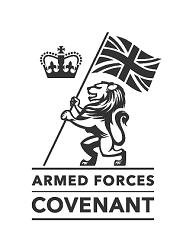|
|
|
Somme {Page 2}... The Battle of the Somme was fought by the armies of British Allies and the French against Germany. It took place between
1st July - 18th November 1916 around the River Somme area of France. This was one of the most embattled encounters
of the Great War with over 1,000,000 men wounded or killed. The first day of the battle (1st July 1916) saw the British alone
with 20,000 killed and 40,000 injured. Germany suffered 650,000 casualties during this battle which added to their significant
losses at Verdun during 1916. Despite these levels, the battle outcome was technically somewhat stalemate,
however, this battle was important to ensure:
The Somme also saw
the birth of modern warfare with the introduction of air support and tanks to the battlefield. When thinking
of the Somme, the picture conjured up in people’s minds is lots of mud. This was certainly the case, the torrential
rain of October 1916 made sure of this in a region that appears to hold the wet at the best of times. Nowadays
there are numerous CWGC cemeteries and memorials serving to preserve their memory and to ensure that what happened in
this rolling region of France is never ever forgotten. ......... o O o ......... If you need
Military Bands or Assistance with Honouring Veterans - Please contact your local Royal British Legion. If sadly this is for a Military Funeral or Honouring Veterans at their Funeral, the best contact points are here. The Commonwealth War Graves Commission has the responsibility to ensure that 1.7 million people who died in the two world wars will never be forgotten. They care
for cemeteries and memorials at 23,000 locations, in 153 countries. The CWGC values and aims, laid out in 1917, are as relevant
now as they were over a 100 years ago.... ......... o O o ......... We have added a number
of further pages and Picture Galleries to our website for you of The National Memorial Arboretum, the Ypres Salient, Flanders & The Menin Gate, Nord Pas de Calais, Somme, Vimy Ridge, Verdun and World War 1 Main Page and seven underpinning pages. ......... o O o ......... The images below are: Picture 11 {0157} - Anglo French Cemetery at the foot of the Thiepval Monument. This serves as a battle memorial
in recognition of the joint nature of the 1916 offensive. The cemetery contains equal numbers of Commonwealth and French servicemen. Picture 12 {0162} - Connaught Road Cemetery. Located 8km Northeast of Albert on the edge of Thiepval Wood near
the Ulster Tower. 1,268 WW1 commonwealth servicemen are buried or commemorated in the cemetery, half being unidentified.
The cemetery was designed by Sir Reginald Blomfield. Picture 13 {0163} - Sign to Mill Road Cemetery. To the
right over the road is Connaught Road Cemetery. Picture 14 {0164} - Mill Road Cemetery can be seen in
the distance. Located 8km North of Albert the cemetery contains the burials or commemorations of 1,304 WW1 commonwealth servicemen
of which 815 are unidentified. The Cemetery was first started in spring 1917. Some but not all of the headstones are laid
flat because the Cemetery was built over the Schwaben Redoubt which was a German strong point consisting of extensive underground
works and tunnels. Therefore the headstones in this part of the cemetery are laid flat due to constant subsidence. The
cemetery was designed by Sir Herbert Baker. Picture 15 {0199} - Serre Road Cemetery No.3. 11km North-northeast
of Albert this cemetery was made by the V Corps in the spring of 1917. There are over 80 casualties commemorated here, mainly
of the 31st Division who fell in July and November 1916. Over half of the burials are unidentified. The access track
to the cemetery is very rough terrain and not really suitable by car and crosses former No Man's Land. Six Accrington
Pals rest here. Picture 16 {0207} - Sheffield Memorial Park. Beyond this memorial there are a further three
British cemeteries having already passed Serre Road 3 to get to this point. Adjacent to this memorial is the Accrington Pals
Memorial. In Queens cemetery lie 50 Accrington Pals in named graves. A path leads to Railway Hallow Cemetery where there are
15 identified graves of Accrington Pals. On the first day of the Battle of the Somme at 0730hrs the Pals advanced up
the slope towards the German lines - machine gun and rifle fire immediately tore into the advancing lines of infantry. This
single manoeuvre wiped out a generation of young men from this Lancashire town. Few, if any of the towns population
would have been untouched by this tragedy. Picture 17 {} - N/A. Picture 18 {} - N/A. Picture 19 {} - N/A. Picture 20 {} - N/A. These images are kindly provided by
Ian Humphreys, RBL, and are his Copyright. You may click on the thumb nail images for the original - these are high res images
and may not be used for commercial purposes without full written consent from Mr Humphreys. Each image is 3264 x 2448 pixels
or 3008 x 2000 pixels and are several MB in size..
|
||||||
AREA17: So that we may all remember those that served, those injured and those that fell for the peace
and security of all...

